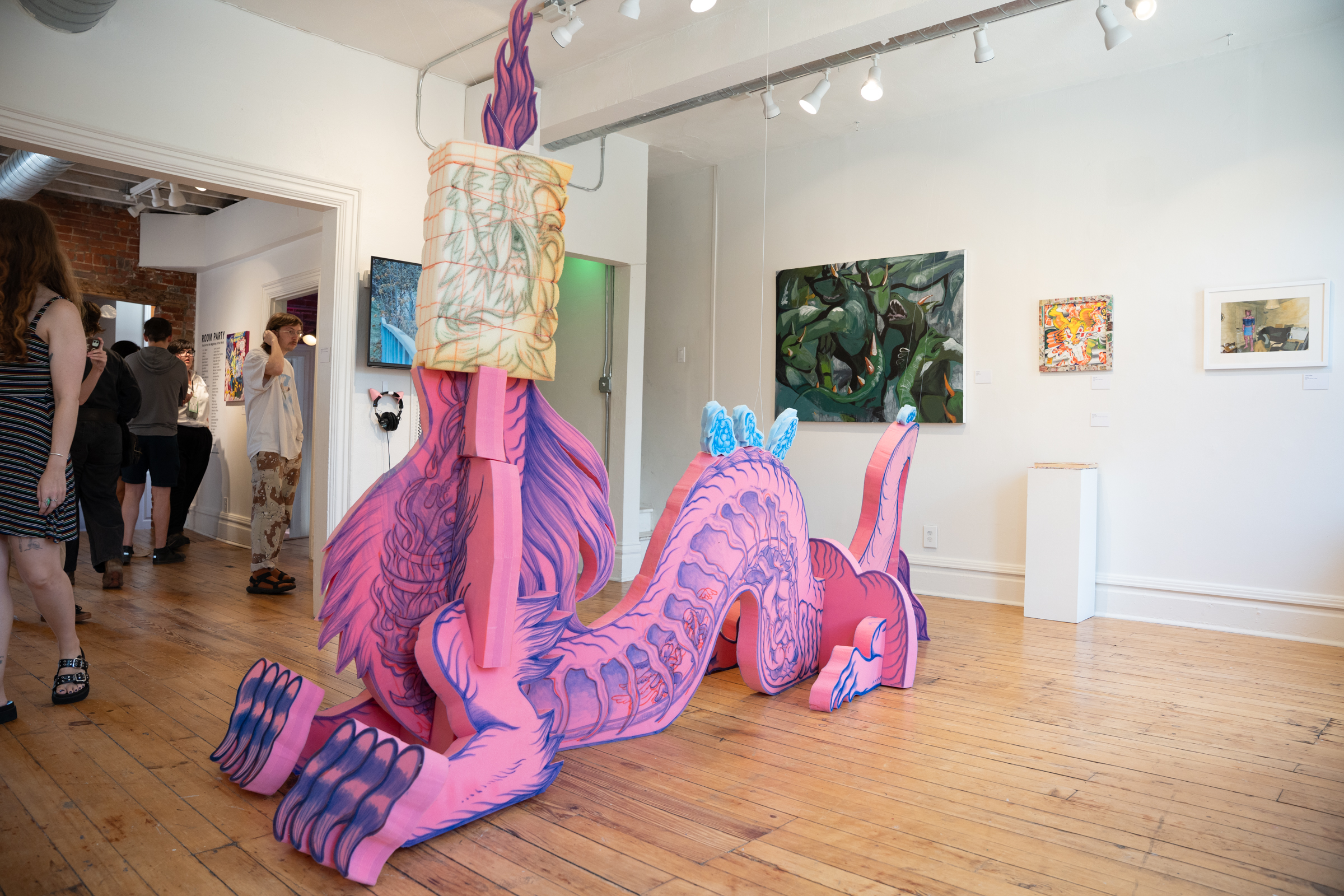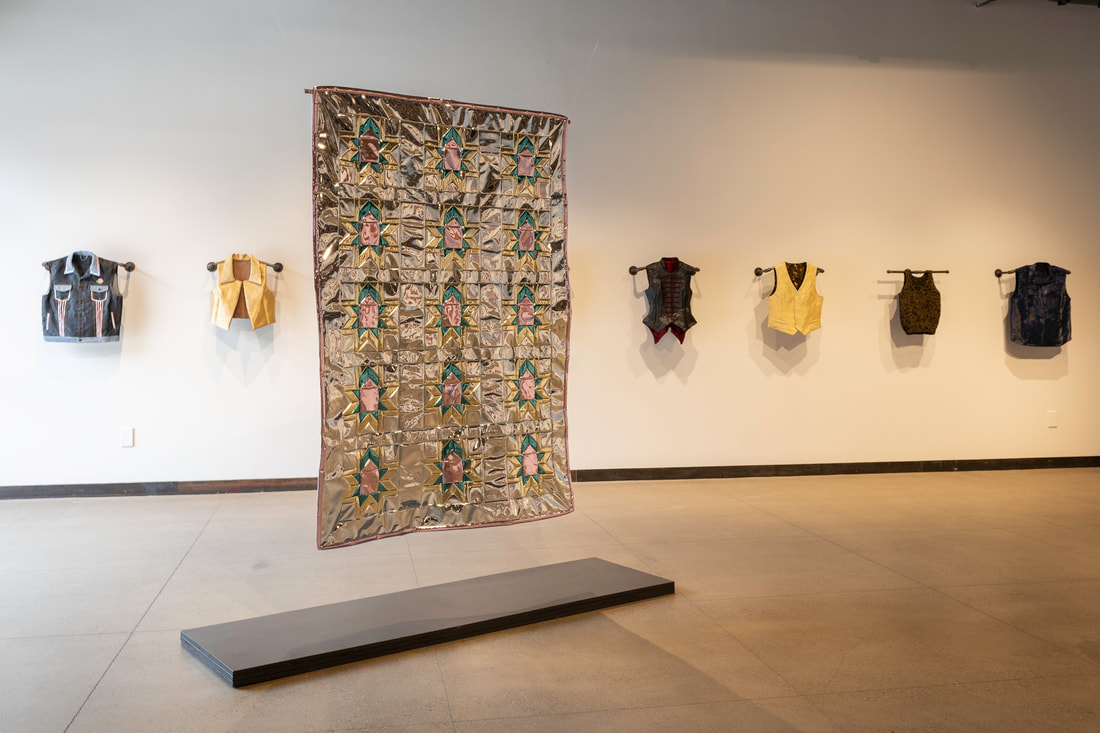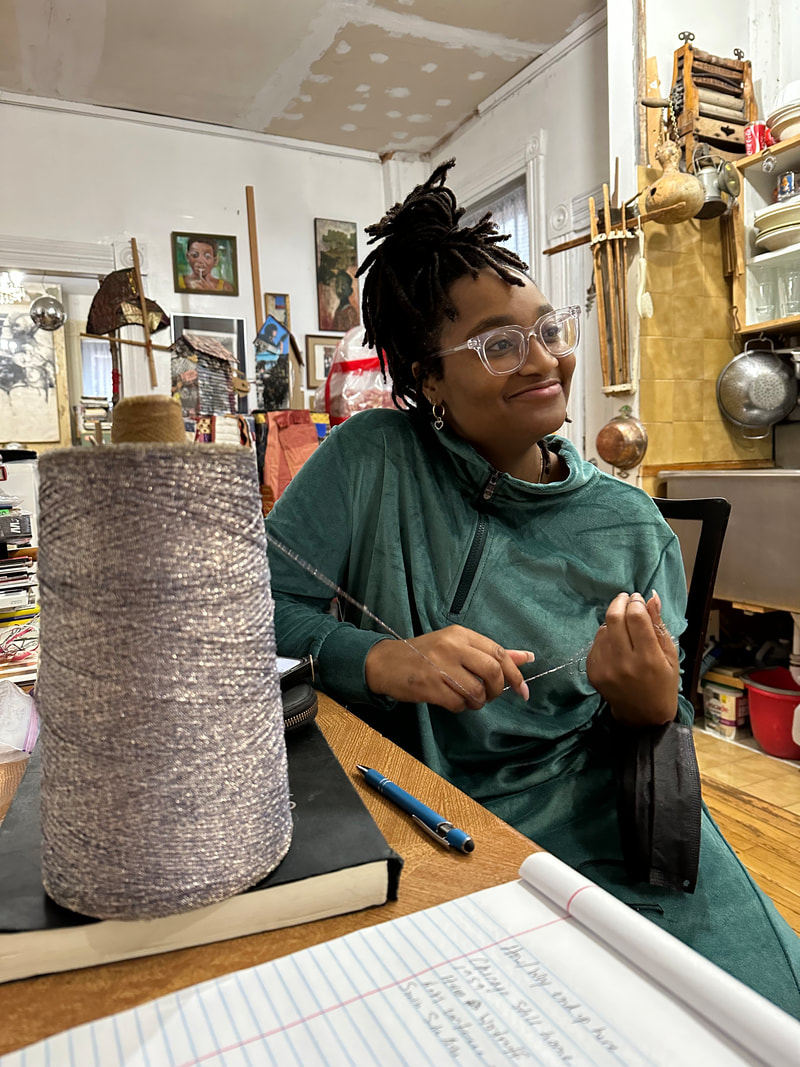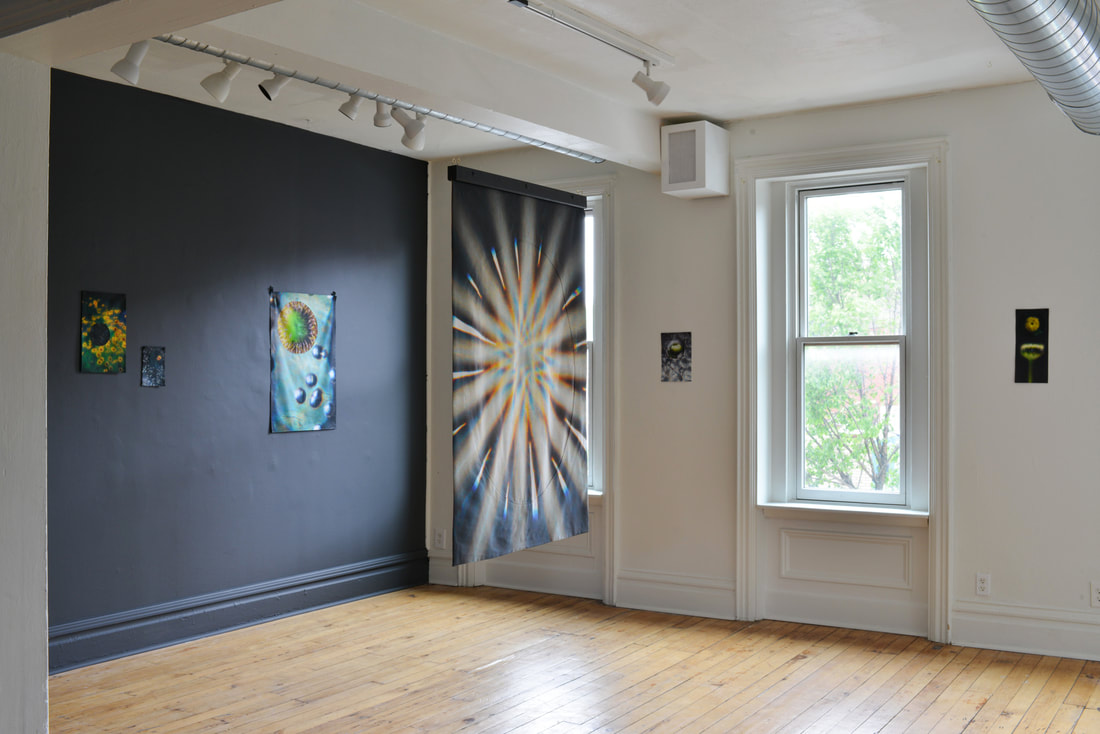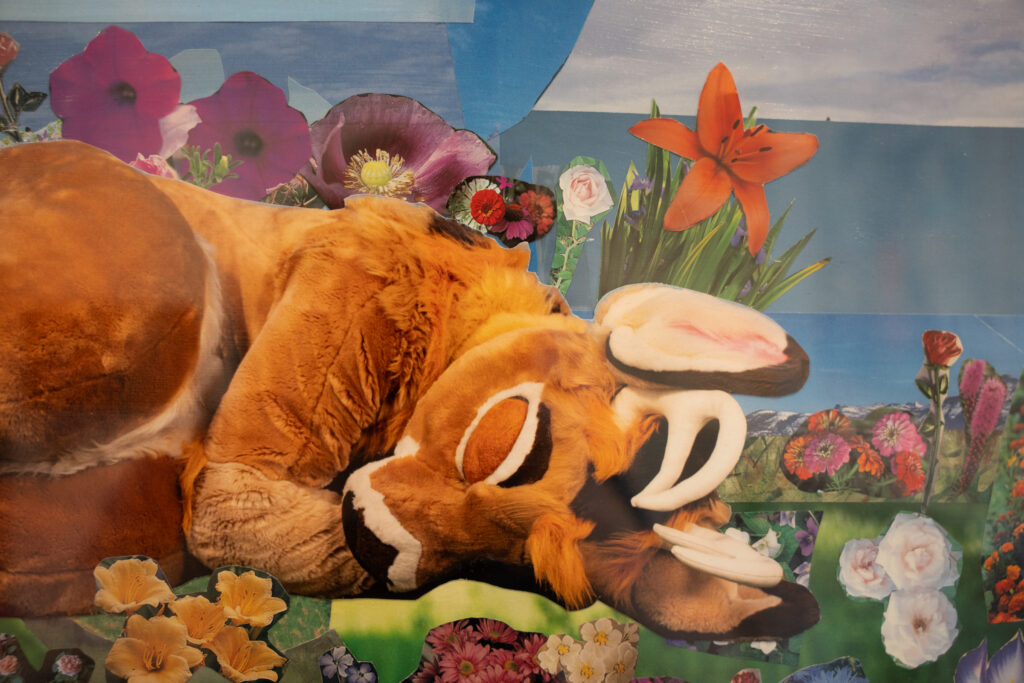
I am of the mind that, by percentage, the most true living we do makes up very little of the living we actually go about. The drops of actual, tangible, transcendent life that do manage to penetrate our surfaces and flow down into our roots fall in mere dozens over the years and eras and chapters of living that they punctuate. Their lucidity is liberating and brief, and we always pursue more of them, with an audacity that can feel shameful.
To put away that shame and live in truth requires vulnerable, radical transformation. When those who have undergone that transformation recognize each other, they come together, for an infinitesimal moment, into a cosmic alignment of every beautiful thing life can be—from the thrilling to the mundane, the chaotic to the domestic—concentrated in a single point.
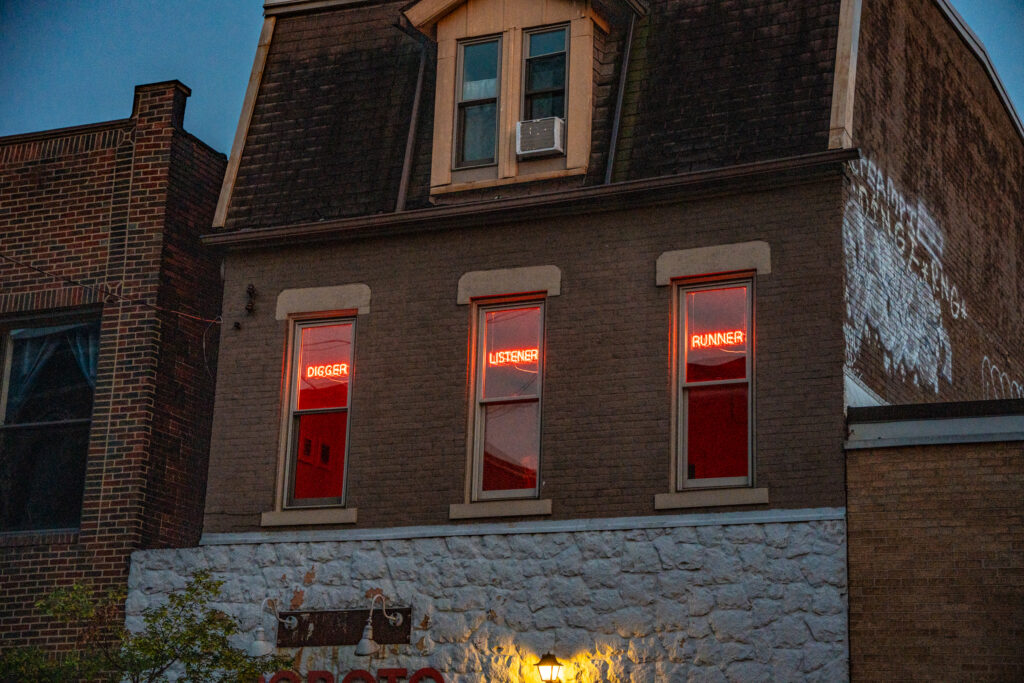
The light refracted from that point has been crystalized and tenderly arranged in Room Party: Furry Art at the Beginning of the World, an exhibition that offers an intimate glimpse into the revelry that resounds, exhales and withers over the course of an anthropomorphic convention weekend.
It’s impossible to absorb the entirety of the lived experience gathered in this show over a single visit, which is befitting of its convention room party context. These night-blooming gatherings matter so much because no time spent at one is ever enough. Abundance of spirit, in full spectrum, is seldom found quite like this. Room Party takes self-indulgent delight in raising up all the brashness of furry life.
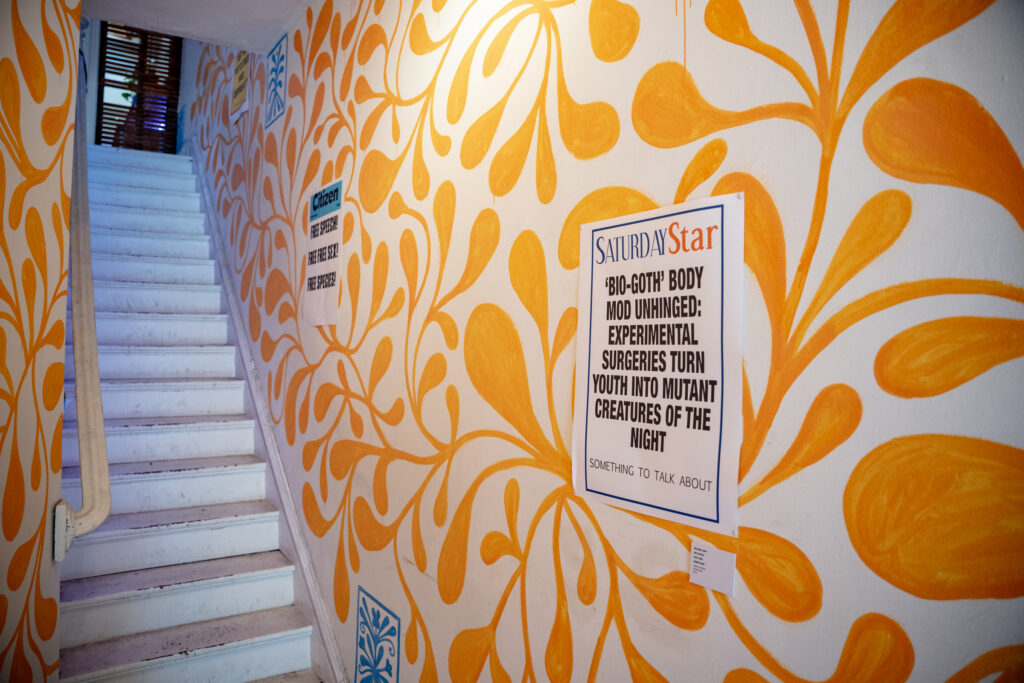
The furry convention providing the metacontext for this exhibition is, of course, Anthrocon, which this year took place from July 3-6. Heading up the staircase to Bunker Projects gallery’ space, Juliana Huxtable’s poster series blares sensationalist headlines: “EXPERIMENTAL SURGERIES TURN YOUTH INTO MUTANT CREATURES OF THE NIGHT.” A gawking clickbait piece or a pearl-clutching social media post in this vein may be the only way in which some of the gallery-going public have considered furries at all. Huxtable’s posters seem to challenge them—to ask, “What is a furry?”—and beckon them upstairs, while also welcoming those well-acquainted with furries with what reads as disarming kitsch.
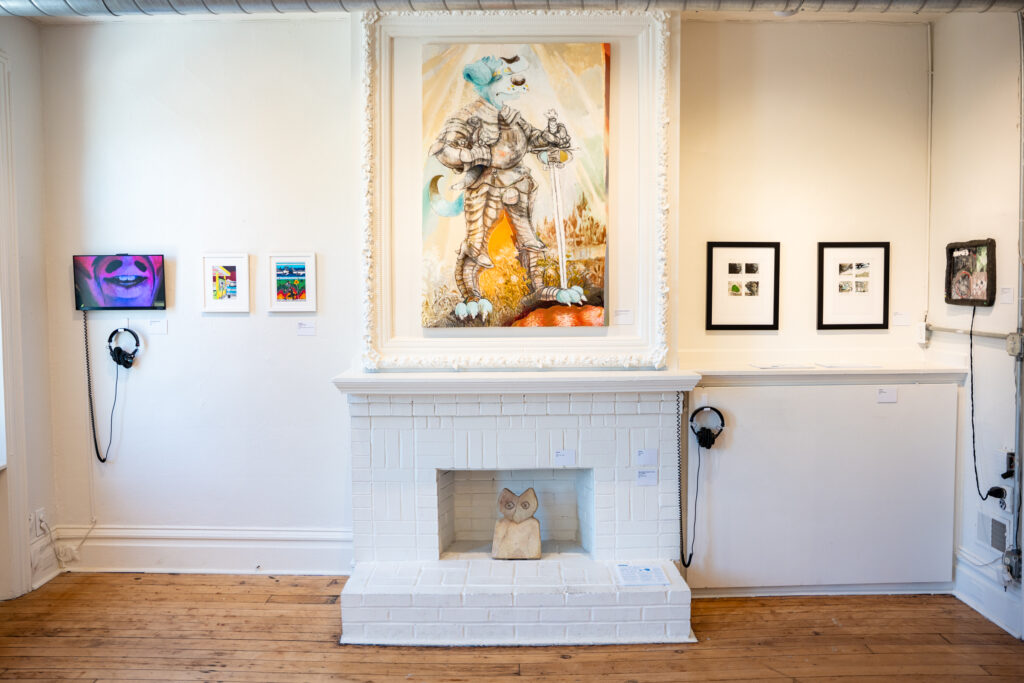
The human desire to anthropomorphize predates recorded history—it is found in the earliest human cave paintings, it’s alluded to in the title of this show, and it gazes directly up at the viewer from the fireplace, embodied in Focus’s Headstone. The kitsch, the scene, the canon, and the craft are all key to understanding the furry experience, but make no mistake—the blood that pumps through it is ancient and existential.
Anthropomorphism is an innocent, compassionate response to our innate existentialism. It’s how we project life outward and reflect its light back into that layer of the self that nothing else can reach. All living things are products of their circumstances; to commune with those circumstances in the instinctual language of personality is a conversational animism. Communally bricklaying these subjective anthro-experiences into a social language—and the cultural iconography, traditions, and structures therein—is the essence of furry life. The furry persona (fursona) is both a call and a response.
In that sense, the fursona is not a replacement for the self, nor is it superior. Consider Miles Davitt’s Four Masks, in which a dog fursona gazes upwards flanked by four faces: a bird, a man, a skunk, and a fox. Any hierarchy of originator, successor, and order is flattened, and the question of “true” self weighs heavily.
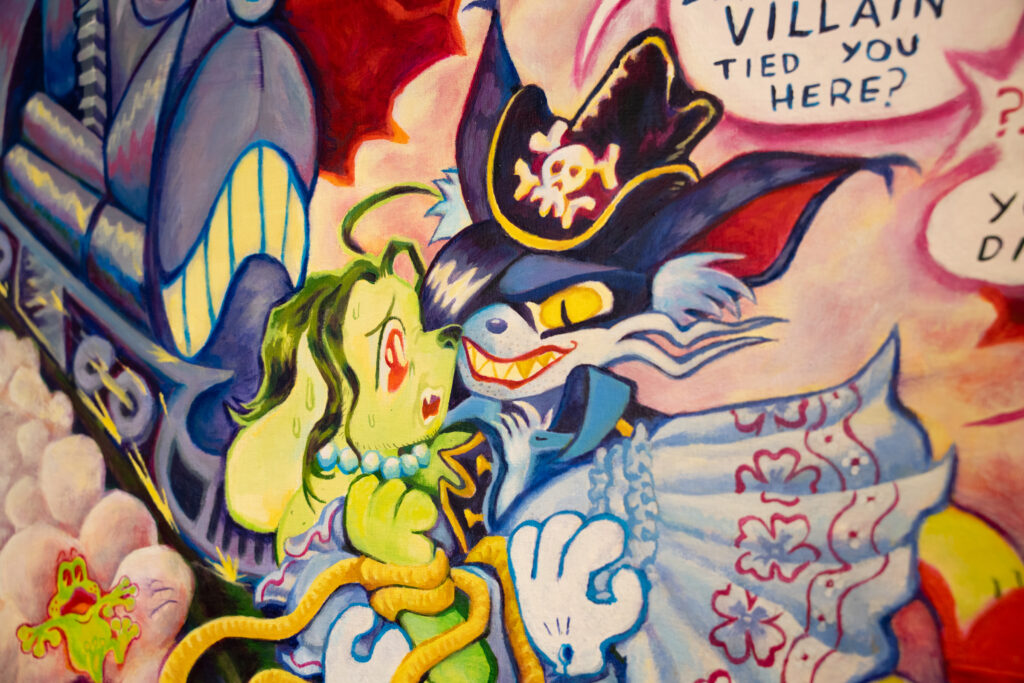
In the light of spiritual abundance, however, there are benefits to plurality. Fursonae embodying specific traits or selves or roles can coexist in bouquet. Mark Zubrovich’s Self Portrait (EMOTIONAL SUPPORT DOG) embodies this self-idealism in playfully romantic grandeur. Centuries of anthropomorphic characters in cultural context make for a rich bed of kitsch for pulling inspiration inward—from vintage sendups like Honk Honk! (or: A Dastard, a Damsel, and a Train) by Eddy Atoms, to the postmodern niche kitsch of online community seen in many of the show’s videos. Layer upon layer of context builds a towering fountain from which fresh life is always pouring, embodied in fursonae.
The culture that perpetuates this rapturous cycle is not a hypothetical—ultimately, it’s made of something material. Perhaps more than any contemporary subculture I’ve encountered, the furry community understands the vitality of craft. Many fursuits are laboriously crafted by their wearers in a sacred process of manifesting the dream-self into the world of the body. Their idiosyncrasies and uniqueness are venerated. Tommy Bruce’s Atmus in the Flowers carries an almost religious reverence in my eyes, framing a photo of Atmus in a meticulously collaged flowerbed, tedious handwork turned into a visible expression of profound love.
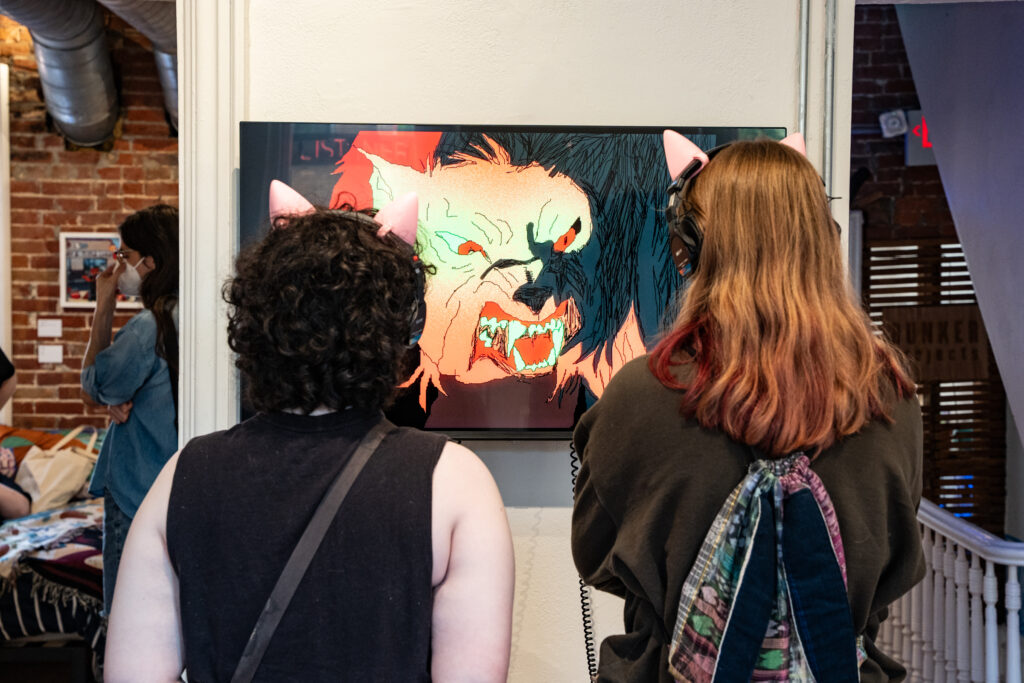
This mindset is not restricted to analog art. One of the most groundbreaking pieces of the show, The Dogzone Bodyfractal, seeks to preserve the craft legacy of digital furry art by literally recording the process of its creation, making it available in a visual database. The importance of process-as-gestalt requires entirely new ways of approaching the preservation of the creation of digital art—a refreshing perspective in this age of peak creative disposability.
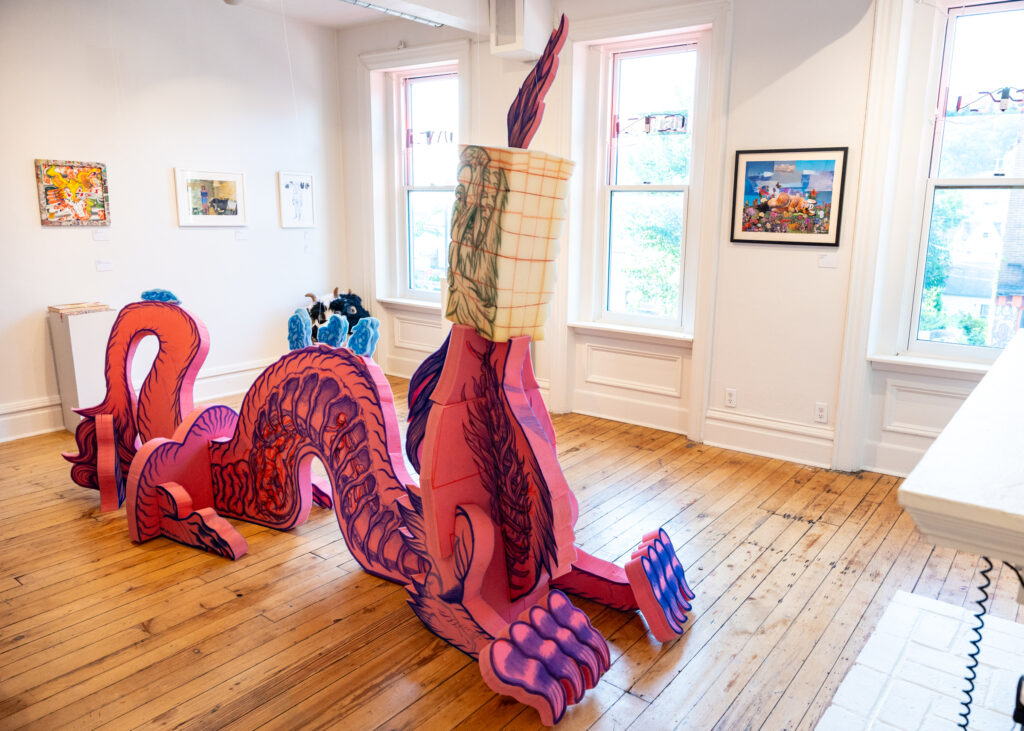
There are two additional notes on anthropomorphism that are crucial to fully understanding this show’s context. The first is that anthropomorphism is not exclusive to animal life. I was delighted to find a sultry Air Canada jetliner inviting me on a tropical vacation in Maya Ben David’s Air Canada gal, viewed on a television directly across from Zephyr Kim’s Theory carries all our friends on his back, a massive foam-sculpted dragon carrying amorphous, rabbit-like creatures within its cross-sectioned body. The dragon and the jet are simultaneously individual beings and spaces for other beings, which raises my second point—that anthropomorphism is recursive.
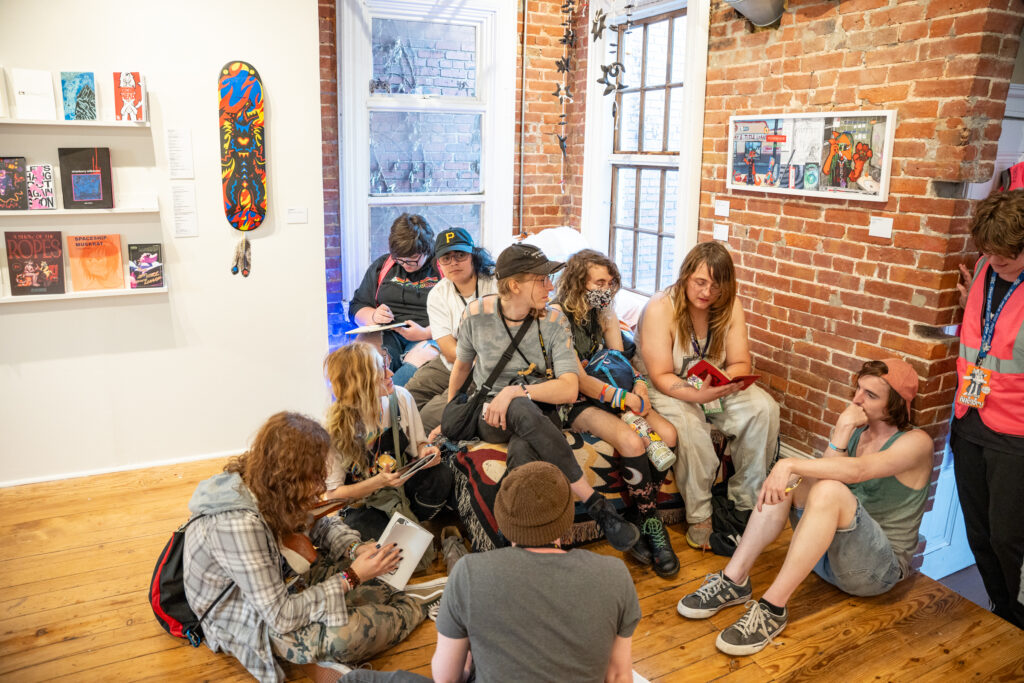
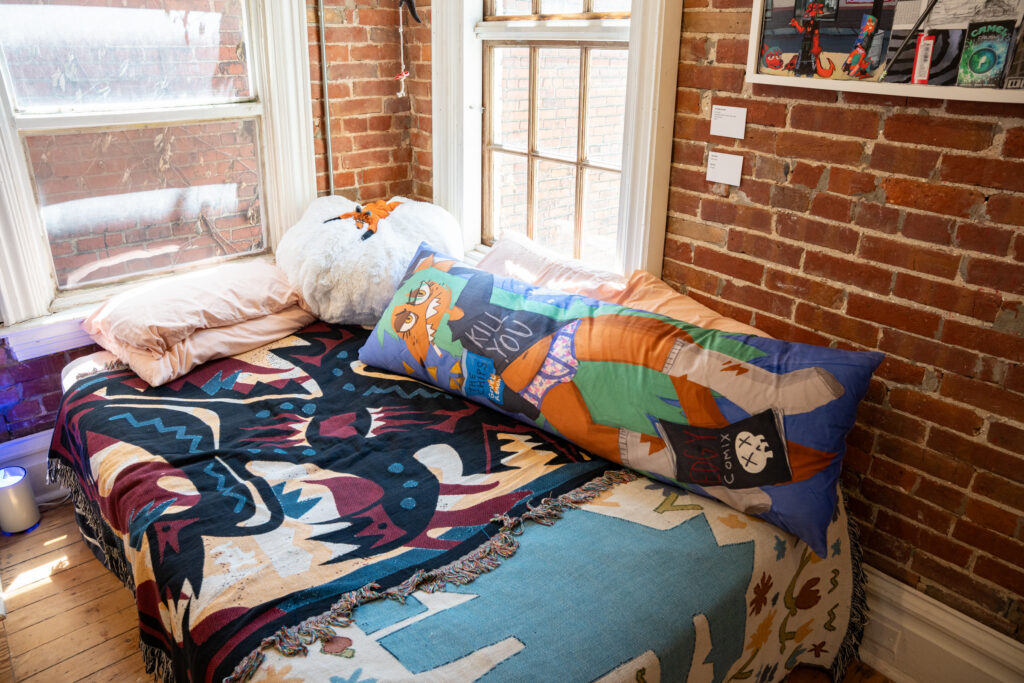
This applies to the literal space of Room Party within the Bunker Projects gallery. In a room full of guests, the selves of those within project and intermingle to fill the space. The projection of self into space and symbol, and the reception of space and symbol back into the self, imparts individual character onto the space. Chairs and a bed are set beside a large zine library, inviting guests to linger and experience being a part of the space. On the bed is an anthropomorphized body pillow (Body pillow by Cate Wurtz) and an anthropomorphized blanket (Blankets by Wolf Kin). It’s furries all the way down.
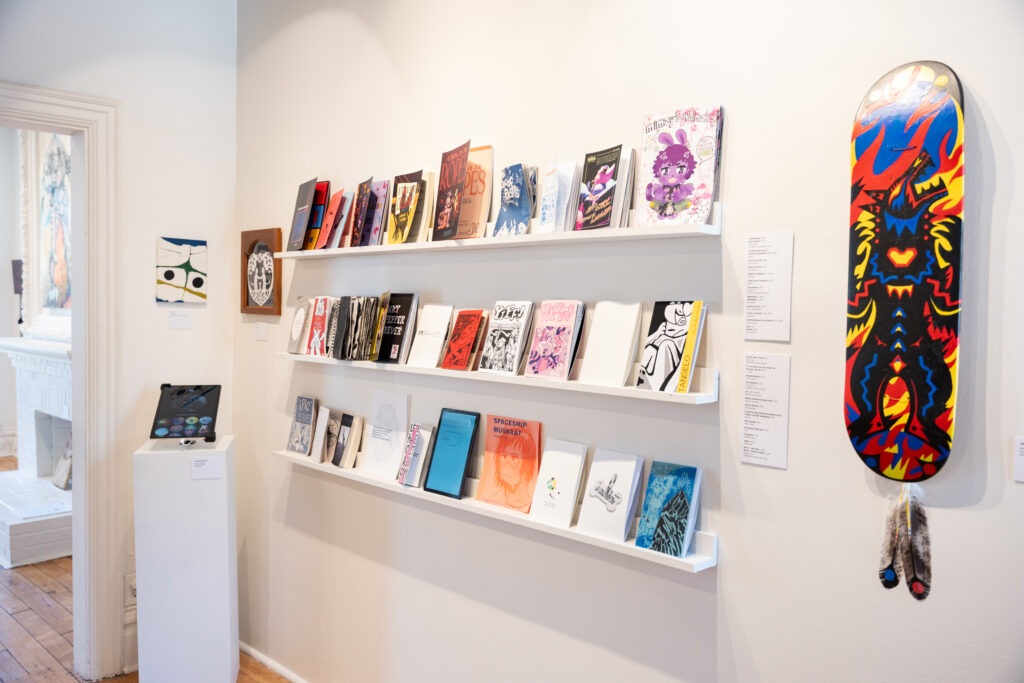
The spirit of “party” in Room Party is perhaps best embodied in the hard-shadowed, carnal angularity of pittypongo’s Bacchanalia. When the Romans invoked the divine in naming that most feverish of classical debauchery, they knew it was born of profound joy and profound grief—an agonizing dichotomy. The greedy maw of joy and the clamped jaws of pain can be difficult to distinguish in the chaos. For all of the love and triumph celebrated here, there is interleaved space left for grief. The formative stories that outsidewolves visually layered to create the text side of Interlaced—a two-sided flyer featuring an illustration and three short pieces of prose—plainly embody this relationship.
The perceptual redefinition of identity at the heart of the furry experience is a radical one, often born of an external impetus that requires painful knowing of the self. Deep personal trauma, be it acutely inflicted or gradually accrued, is a common thread of the formative furry experience. The furry community is a visibly queer one, and stories of queer grief recounting the violence raised against it—be it social, physical or sexual—dwell among the print and spoken words woven through Room Party’s pieces.
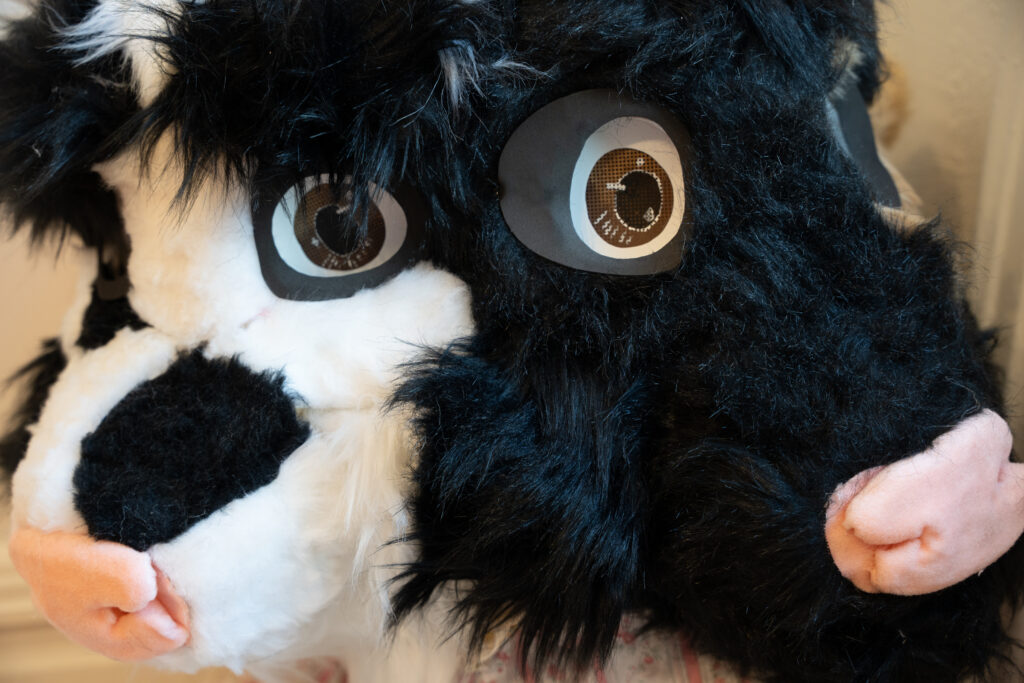
The constant dull ache of late capitalist malaise also echoes throughout the exhibition. The ceaseless tides of alienation, in the Marxist sense, manifest as parallels between livestock agriculture, bioessentialist brutality and corporeal violence, seen in pieces like Kate Turner’s Mother Tongue and Juliana Huxtable’s Infertility Industrial Complex. The iconography of cultural anthropomorphism can also be alienated, its soul ripped from its body, as manifested in the mundane nightmares of Izzy Paige’s Pump Rabbits and Shellshocked Sylvester, set to the backdrop of resource-motivated forever wars.
Room Party presents this collective grief with a sometimes visceral frankness, but without othering. Instead, it brings grief into the greater fold of identity and processes it communally—much akin to how the human mind can heal from trauma on a neurological level. Self-enforced taboo is antithetical to that healing, and to how the furry experiences generally enriches life. I find this point to be the one most misunderstood by the general public, and it is most visible regarding furries and sexual expression.
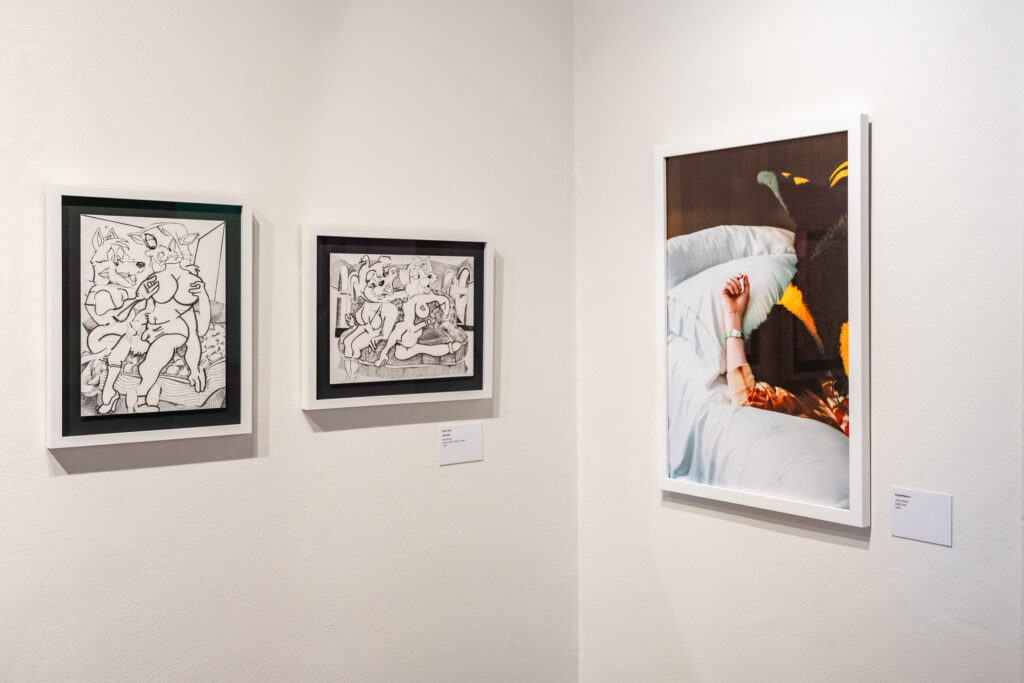
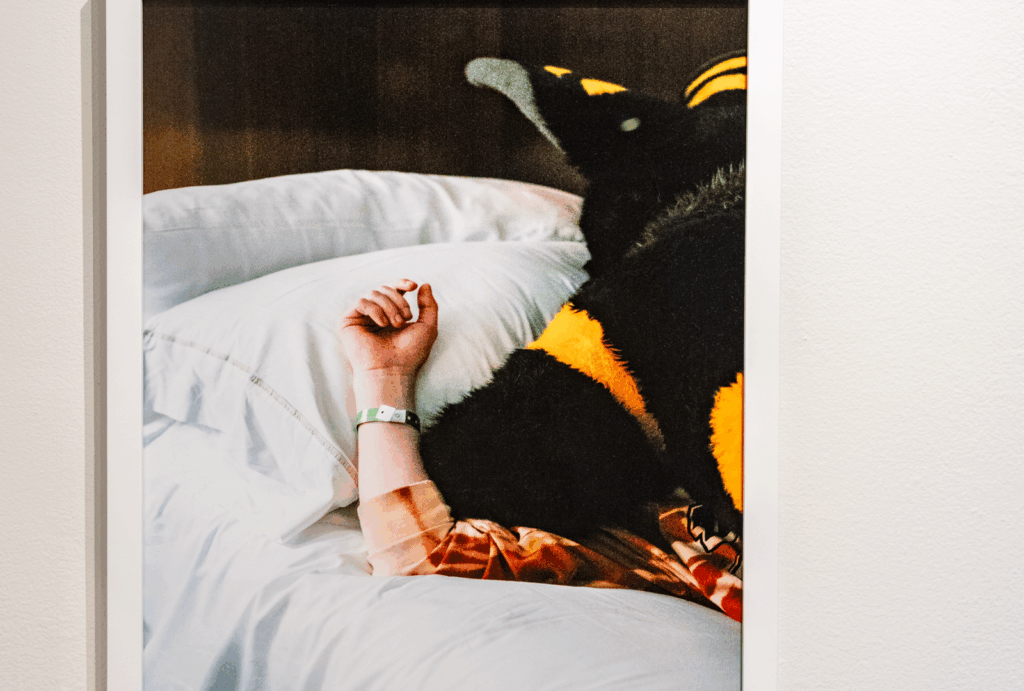
Sex is an inevitability when interior natures so enormous and multitudinous as those found among furries make contact with one another—the body runs along in rapturous pursuit of that which it cannot contain. The sex on display in Room Party ranges from the intimate to the domestic to the violent to the ecstasy of self-destruction to the outright ego-erasing (Room Party and After Dark, Nate Skinner), but the show takes care to balance its quiet moments with the bombastic. I was particularly moved by James Benoit’s Kingo/Nikayaze I: the bodies interlocked, out of frame; the black fur pressed against a bare wrist; the shot dead-centered on the convention entry wristband wrapped around it—the world-changing, life-mingling linchpin of it all.
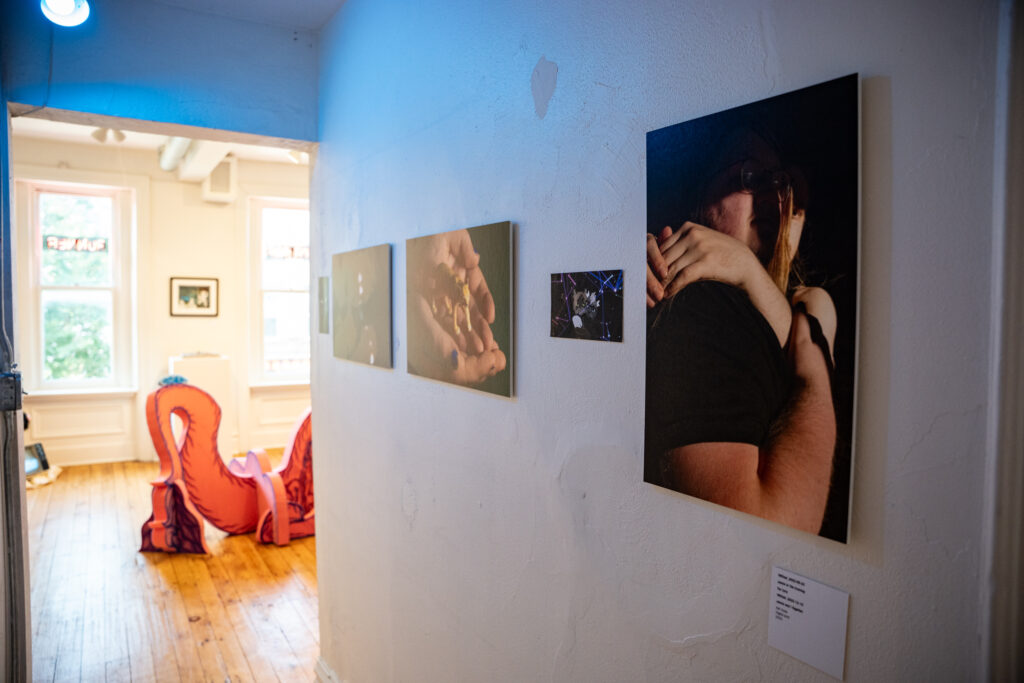
That paper band binds together all of the leylines coursing beneath the latticed surfaces of Room Party. The show shoulders its enormity of purpose—“furry art from the beginning of the world”—effortlessly. I wept as I left, overcome by the weight of it all. No time, no life, is enough. The harmonic play and healing and voyaging born out of the furry world bubbles up in much more abundance than could ever be contained by any earthly construct; beauty lost is an inevitability. As an outsider seeing this generational length laid bare, I had to mourn it for a moment. But only for a moment. The same magic, gifted by dignity of life, that weaves together Anthrocon or Room Party weaves together a fursuit or a fragile printer-paper zine or a virtual reality DJ set or the reclaimed fiber of Cass Dickenson’s Mar 05 ‘25. It must be lived out, its finality unavoidable, to release its potential energy as change. It is the unburdened self that dreams the furry body, but it is the crafting that imbues the spirit.
ROOM PARTY: Furry Art at the Beginning of the World is curated by Brett Hanover, Cass Dickenson, Lane Lincecum, and Paul Peng
Photography by Tommy Bruce
Max Krieger is a Pittsburgh-based video game developer, graphic artist, and cultural critic. You can find his professional portfolio at www.maxkriegervg.com, and his less professional online presences at linktr.ee/maxkriegervg.
If you’d like to support Bunker Projects’ mission to provide a safe, equitable space for emerging artists to develop their practice and create new works for exhibition, please consider joining our Bunker Commons program or making a one-time or recurring donation here. We are so grateful for your generosity.
